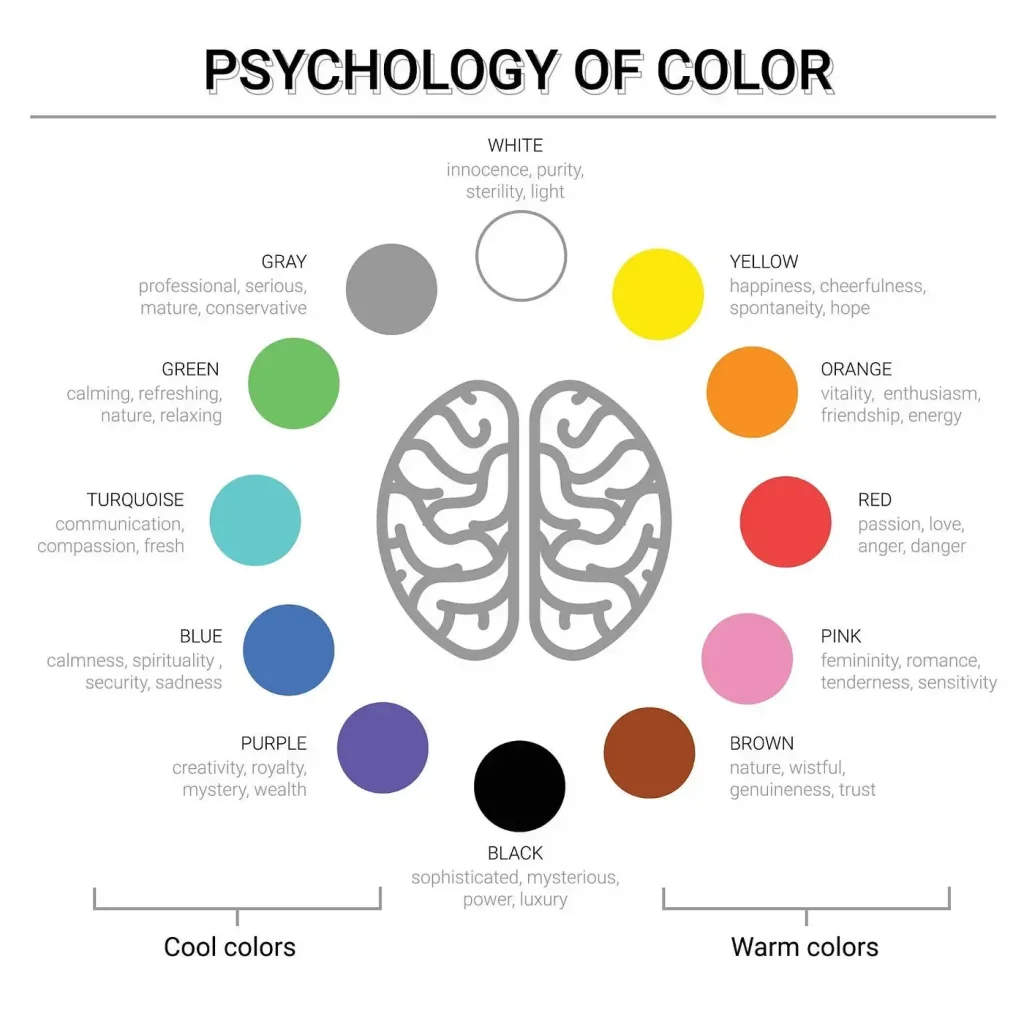When it comes to web design, visuals matter. Before visitors read anything, they quickly form impressions of how the site looks, oftentimes in less than a second.
One key part of visual branding is color. At Succeeding Small, a digital marketing agency in Colorado Springs, we help small businesses grow. We understand that color is not just for decoration but acts as a powerful tool that influences how users behave, interact, and feel. We help businesses implement this strategy. We focus on design choices that match your brand and captivate your audience to achieve better results.
In this post, we’ll explore how color psychology in web design can influence user behavior, increase conversions and help your website stand out in a competitive online environment.
What is Color Psychology in Web Design?
Color psychology in web design is the study of how color impacts a user’s emotions, perceptions, and actions when interacting with a website. The concept is rooted in behavioral psychology and is frequently applied in marketing.
It helps shape decisions and influence experiences with brands. Different colors evoke different emotions in us.
For example:
- Blue often conveys trust and calm.
- Red signals urgency and excitement.
- Green can symbolize growth and wellness.
- Yellow suggests optimism and energy.
Understanding how colors affect perception can help businesses design websites that not only look appealing but also guide users toward taking action.
Why Does Color Matter for User Behavior?
Color silently influences how users interact with your website. It can affect whether someone stays on your website, clicks a button or leaves their shopping cart behind.
Up to 90% of first impressions about products can be influenced by color alone, especially if that color matches the brand. This means the colors on your website could influence whether a customer decides to buy before they even read a headline.
Color affects not only emotional perceptions but also user attention. Eye-tracking studies and research indicate that warm, bold colors, such as red and orange, can enhance visibility and increase the likelihood of clicks.
For example:
- Red is often associated with urgency or excitement (think “limited time offer” banners).
- Blue builds a sense of trust, which is why it’s popular with banks, hospitals and tech brands.
- Yellow grabs attention and promotes a sense of cheer or optimism.
As Adobe explains in A Guide to Color Meaning, these emotional cues can influence users’ choices, whether it’s feeling confident enough to fill out a contact form or deciding to make a purchase.
By using color thoughtfully, you can help influence people’s choices and guide them more easily towards taking action.
Best Colors for Website Conversions
Color can greatly affect click-through rates and conversion success. Red and orange buttons typically work better than blue and green for urgent calls to action (CTAs) because they create stronger emotional reactions. However, it’s essential to consider the context and ensure it aligns with your brand.
As explained by 99Designs, conversion effectiveness also varies depending on factors such as gender, age, and cultural background. For instance:
- Women may respond more positively to purples and soft hues.
- Men often favor bold tones like blue and black.
To ensure colors support conversions, they must also be easy for everyone to read. The W3C Accessibility Guidelines recommend a minimum contrast ratio of 4.5:1 for body text. This standard helps guarantee that people with visual impairments can read the text easily.
How to Choose the Right Color Scheme for Your Website
Choosing the right colors means aligning them with your brand personality. The Adobe guide emphasizes that colors should communicate your brand’s values and emotional tone. A health and wellness brand might focus on green, while a luxury service might use black, gold or navy blue.
Tools like Adobe Color, Coolors and Canva’s Color Wheel can help you try out different color combinations. When you choose colors carefully, it can boost your brand’s identity and help you stand out from competitors.

Mistakes to Avoid with Color Psychology in Web Design
Even with the right intentions, using color incorrectly can lead to problems. Some of the most common color mistakes in website design include:
- Using too many bright colors that overwhelm the user
- Choosing low-contrast color combinations can make text hard to read
- Not testing different designs or colors for CTA buttons
According to The Psychology of Color in Branding, using consistent colors in your brand can increase recognition by up to 80%. On the other hand, using different colors might confuse or discourage users from visiting your site.
How Color Psychology in Web Design Drives Conversions
Color is more than just decoration; it’s a communication tool. The right color scheme can create emotional connections, make your site easier to use and increase conversions. Different colors have different effects: blues can foster trust, while oranges can generate energy. Using color psychology in web design helps you connect with your audience creatively and effectively, without relying on words.
At Succeeding Small, we create easy-to-use and effective websites for small businesses in Colorado Springs and beyond. Our team selects colors that align with your brand, resonate with your audience, and deliver results. Whether you’re starting your first website or rebranding, schedule a free consultation today to build a site that works for your business.














